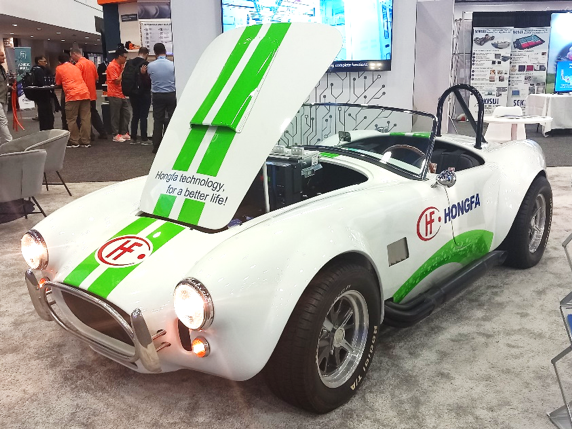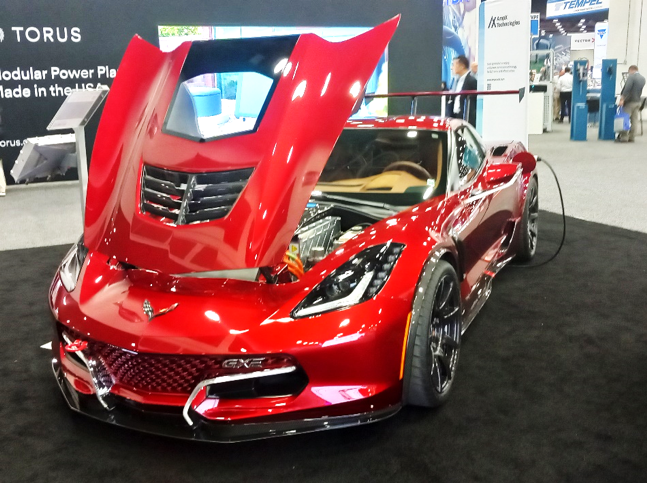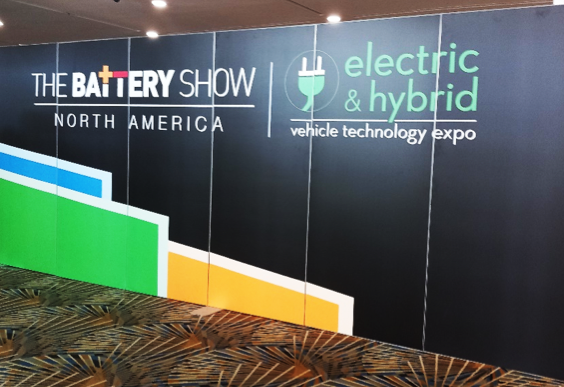A Sense of Optimism at The Battery Show North America
Posted on: in Blog
The Battery Show North America is one of the few not-to-be-missed battery events on the calendar and this year was no different. In its 15th year, the event attracted 21,000 professionals and more than 1,300 exhibitors. With three days of conference sessions featuring 136+ hours of expert-led learning, there was something for everyone. This included a talk from Ilika Technologies about how safer solid state cells lead to simpler pack design and lighter electric vehicles: contact me if you missed it and want the slides!
Moving to the Detroit downtown exhibition centre last year was a good move. The show had outgrown the Novi facilities, and everyone that got stuck in humongous traffic, driving into the event over the years, was happy with that decision. By the way, a persistent myth is that the name Novi came from the town being the sixth railroad stop outside of Detroit, as in “No. VI”. Good story, but probably untrue.
Despite all the fun, the battery industry is going through a rough patch, including in the USA. Last year was doom and gloom, with industry members wondering how they would counter the dominance of China for the manufacturing of lithium-ion batteries: Where is the plan? Where are the long-sighted investors? How can we compete on price?

This year could have been even worse, with tax credits ending just the week before the event. But in typical American form, the OEMs came out with a bullish message of optimism, as exemplified by General Motors’ three-point plan.
First part of the plan is addressing the cost element. The price of LFP cells has dropped by 20% in 2024 alone. It is now possible to find cells at $50-60 Wh/kg from China, mainly a consequence of over-manufacturing. To make matters worse, China’s new export restriction policy on high-end LFP technology will ensure it will remain in the hands of Chinese companies. The USA’s plan is to focus on alternative materials. Ford and GM (with LG Energy Solutions) have perfected cathode material “LMR” (Lithium Manganese Rich), with significant cost reduction achieved by lowering the content of expensive nickel by half and dropping cobalt almost entirely from the NMC structure. LMR is expected to reach cost parity with LFP at volume.
The second part of the plan is improving performance. LMR, for example, yields good safety and 33% extra energy density compared to LFP. Silicon anode materials are finding their niche in drones and aviation and sodium cells are finding their place in BESS, microgrids, home storage or AI data centres.
The final and third part of the plan is to bring the supply chain to America. LMR will be manufactured by Ultium cells (the JV between LG and GM) at their Ohio and Tennessee sites. Amprius will manufacture its silicon anode material in Colorado. Foreign companies like AESC, SK On and Samsung SDI all have plans to build battery manufacturing facilities in the US, while Tesla was first in producing Panasonic’s cell technology at the Nevada Gigafactory. But growing the domestic supply is not enough; this must be done with unequalled quality in mind, through improving automation and the expanding use of Artificial Intelligence.

AI had a prominent session at the show, and here we are not talking about ChatGPT. Robotics and machine learning are at the core of AI’s power in improving battery and cell manufacturing quality. Today AI is used in pattern recognition, predictive modelling and process automation. Soon, it will assist manual tasks in targeted and clearly defined use cases, whilst eventually augmenting human judgment without replacing it - real people will monitor the process as a whole. AI is predicted to find its place in materials selection, management of R&D knowledge, streamlining engineering run flows, accelerating product designs and optimising the very large number of parameters involved in manufacturing products with the highest performance.
So how does a company like Ilika Technologies manage the current economic downturn in North America, and very similar in Europe? In reality, this is an exciting opportunity for Ilika: whilst major OEMs are putting their houses in order, they will rely on start-ups and dedicated technology companies like Ilika to carry on innovating in terms of new materials and cell technologies. No doubt they will turn the economic environment to their advantage in no time and will look to companies like Ilika to offer the next generation solutions they have not been able to concentrate on. Good times are coming but as battery expert Celina Mikolajczak said in the opening session: “We’ve all got to do the work!”
Denis Pasero, Product Commercialisation Manager

